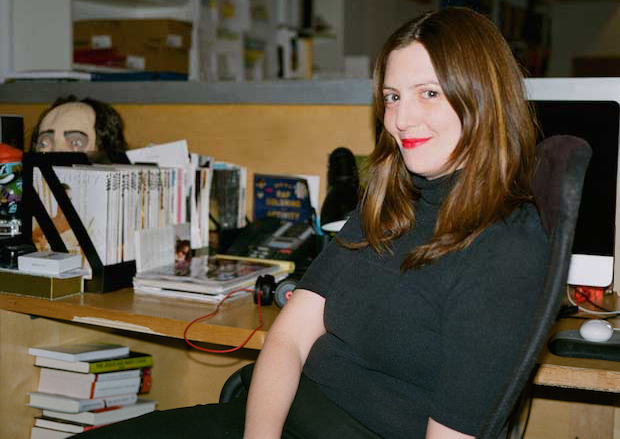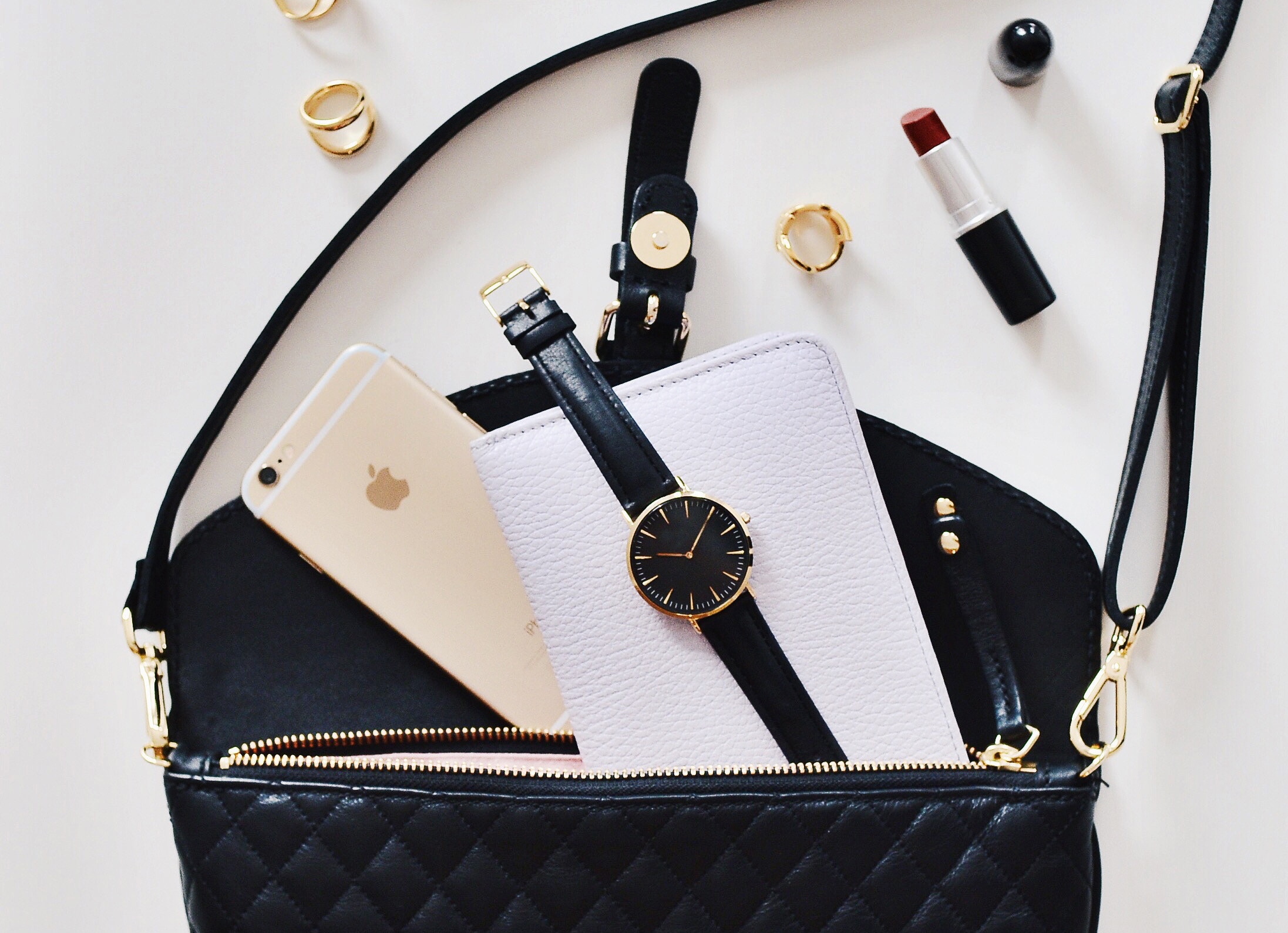What is your career backstory? Like a lot of Midwest teens in the ’90s, I was a Sassy super-fan, and a journalism degree seemed like the best way to enter that world. I applied for a copy editing position at my university’s newspaper during the summer semester—less competition, no shame—and wound up hopping back and forth between the copy and entertainment desks until graduating. I’ve basically been doing the same ever since, starting as a music writer for an alt-weekly in Detroit, and eventually transitioning to full-time freelance writing and copy editing in New York City. One of my freelance gigs led to a full-time position as an associate editor for Spin, and I actually wound up at Nylon by inquiring about a temp copy-editing job. At the interview, I was asked to apply for a full-time senior editor opening instead, and about six months ago I was promoted to features director. I guess you could say my career backstory is a combination of hard work and good timing.
What is an industry pet peeve of yours? When PR reps hit send before researching what my publication covers. The number of emails I get pitching stories on potpourri and compression stockings is staggering.
What is a must-have on the job? A comfortable pair of headphones; my job requires listening to a lot of music—and sometimes the same 10-second snippet of one song 20 times in a row. No one else wants to hear that. Also, sour gummy candy at about 3 p.m. daily. Oh, and dental insurance
What is your favorite work perk? Hearing albums before they come out, never having to buy shampoo, and a seemingly infinite supply of macaroons and mini-cupcakes.
You schooled and started your career in Michigan; what brought you to New York? I was living in Detroit and working for a small newspaper in a rural area about 45 minutes south of the city. When my lease ended, I knew that the right thing to do was find an apartment in the community where I worked. But I’m a city girl at heart, and instead took this turn of events as a sign that I should finally move to New York. Sounds crazy, but it worked out. (Of course, after eight years in the city, I now long for a place in the country with a big yard and a wood stove. Ha!)
What inspired you to go back and get your MFA after being in the industry for a while? I was lucky that my first few jobs out of college allowed me to write long pieces on interesting people and topics. After moving to New York, I was getting assignments for record reviews and short blurbs here and there, but I was having a harder time convincing editors to trust me to “go long.” Meanwhile, I was getting a lot of copy editing gigs, and wound up accepting a full-time one for Martha Stewart’s web site. After a couple of years, I was promoted to an associate editor role, which involved writing, but again, of the blurb variety. I joined a fiction workshop that a Brooklyn author held in her dining room and began looking into creative writing programs, but wound up applying with a nonfiction concentration, thinking I might have a better shot at getting in. I was accepted into the Bennington Writing Seminars, and spent two years working on a memoir that I’m currently breaking down into a series of essays. It was exhausting holding down a full-time editing job while working toward an MFA, but the experience was invaluable, and I try to remember that every month when it comes time to pay my student loans.
You’ve worked in both digital and print; what are the major differences between the two when it comes to features? When I first started out as a music writer, I remember envying radio DJs because they could describe a song, and then just play it for the listener; now the Internet allows writers to basically do the same. You can hyperlink text or imbed a track from SoundCloud and create all of these connections in real time. That being said, creating such links in print can be just as fun. A well-written magazine feature can touch all of the senses and spark “a-ha” moments in the reader’s imagination.
You interview a lot of celebrities/musicians. Do you have any tips for conducting a great interview? Do way more research than might seem necessary, but don’t let the situation devolve into a “Remember when you did that cool thing? That was awesome” scenario. And don’t forget to listen. Your instinct, especially if you’re nervous, will be to focus on your next question. I cringe thinking about my earliest interviews, and what could’ve been gleaned from follow-up questions. You run the risk of losing your place, but the awkwardness of searching for your next question will make your subject feel more comfortable revealing their life story to you. Speaking of, it’s usually not a terrible idea to reveal a little something about yourself to balance things out a bit. One-way giving can be tiring for many interviewees. But don’t go overboard. A short anecdote or two is plenty. And if your interview is in person, take lots of notes on the scene, what your interviewee is wearing, whether he or she leans in to reveal something particularly interesting. These details help paint a complete picture while writing. While the interview is happening, you’ll think, “I’ll remember this—I don’t have to write it down.” Write it down anyway.
What is your advice for applying and getting an editor’s attention during the application process? I’m a sucker for compliments.
What is a favorite published piece that you’ve written?
It was probably my most recent article—a cover story on Charli XCX for the December/January 2015 issue of Nylon. It was really exciting to catch her right as she’s about to release an album that I’m predicting will make her a household name. The issue will be on newsstands starting December 2.
What is some advice you have for others trying to break into the industry?
The industry was so different when I was starting out, but one thing that has remained the same is the importance of internships. It may seem like we’re not paying attention, but we are! A lot of Nylon editors started out as interns, and I’m always recommending interns who do superb work to editor friends at other magazines seeking to fill entry-level positions. Another tactic might be to reach out to the editorial assistants at your five favorite magazines, and ask them how they got there. Remember: Editorial assistants love compliments, too!
URL: melissagiannini.com
Twitter: @melgiannini
Instagram: @melissagiannini
Melissa Giannini was photographed in the Nylon offices by Beth Garrabrant.
Amanda Jean Black is a guest blogger at Ed2010, sharing stories from her site onthemasthead.com. When not hunting down publishing’s elite for an interview, you can find the native New Yorker obsessing about style and culture, shopping for designer streetwear, and jamming out to 90′s alt rock.




 Chatting with Stephanie Wu, Senior Associate Editor at Town & Country
Chatting with Stephanie Wu, Senior Associate Editor at Town & Country